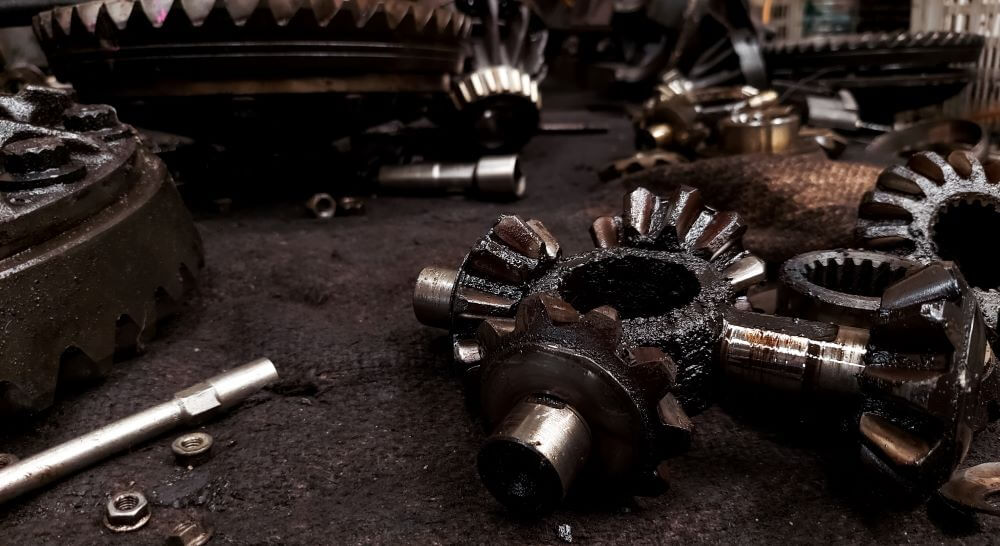Upgrading a fleet is more than replacing aging vehicles—it’s about making smart, strategic changes that strengthen overall performance and reliability. Crown and pinion gears, essential parts of the differential, often go unnoticed yet have a direct impact on how effectively a fleet operates day after day.
These precision-engineered components influence how power is delivered to the wheels, affect load-handling capability, and shape driving efficiency under real-world conditions. Investing in the right gear choices isn’t simply a technical detail; it’s a practical way to reduce costs, extend vehicle life, and keep a fleet working at its best in demanding environments.
Read on to see how crown and pinion gears can transform your fleet upgrades into a true competitive advantage.
Understanding Crown and Pinion Gears
Crown and pinion gears play a central role in controlling how power moves through a vehicle’s drivetrain. They consist of precision-cut teeth that mesh to redirect rotational force at a right angle, enabling the driveshaft to turn the wheels effectively. This design ensures dependable power transfer under varying load conditions.
Moreover, the way these gears are cut and matched influences noise levels, heat generation, and overall efficiency. Precise manufacturing and careful installation can reduce vibration and wear, helping vehicles operate more smoothly even under demanding workloads. Such attention to detail supports consistent performance across a range of applications.
Enhancing Vehicle Performance Through Gear Upgrades
Upgrading crown and pinion gears can significantly improve how fleet vehicles handle demanding tasks on the road. Selecting the right gear ratio helps match vehicle performance to specific operational needs, whether that’s hauling heavy loads or maintaining steady speeds over long distances. This careful matching reduces unnecessary strain on engines and drivetrains, supporting consistent service for fleet operations.
Furthermore, buying from a manufacturer specializing in precision-engineered gears and transmission components, such as ntgear.co.uk or another trusted supplier, ensures the parts meet high standards for quality and reliability. Choosing a proven supplier supports confident decision-making by offering clear specifications and dependable sourcing. This approach reduces unexpected maintenance issues and supports long-term planning for fleet managers.
In addition, gear upgrades can be coordinated with other vehicle modifications to create a more balanced setup tailored to daily use. Adjusting ratios alongside suspension changes or powertrain improvements ensures all systems work effectively together. This level of coordination strengthens a fleet’s ability to deliver reliable service under varied conditions without sacrificing efficiency.
Cost-benefit Analysis for Fleet Managers
Every fleet upgrade calls for a clear look at its long-term value before making any commitment. Careful planning ensures that costs lead to measurable benefits instead of unexpected budget strain. Smart investors know that evaluating these details helps avoid wasted spending and guides better allocation of resources.
The following are considerations to help assess whether crown and pinion gear upgrades align with long-term goals:
- Impact on fuel spending: Upgrading to well-matched gear ratios can lower fuel consumption, especially for fleets covering long distances. Even a modest improvement in efficiency can lead to meaningful savings across dozens or hundreds of vehicles each month. Over time, this benefit often offsets part of the initial cost of the upgrade.
- Frequency of unplanned repairs: Older or poorly suited gears can contribute to frequent breakdowns that interrupt schedules and add repair bills. Installing precision-cut replacements reduces unexpected failures and supports a more predictable maintenance budget. Fewer unplanned repairs also help keep vehicles available when they are needed most.
- Effect on vehicle trade-in value: A vehicle equipped with upgraded gears may hold its resale value better because it offers documented performance improvements. Prospective buyers often see upgraded components as a sign of consistent care and investment. This advantage can make trade-in negotiations more favorable when it’s time to replace older units.
A thoughtful review of these factors can guide smarter decisions and strengthen the return on any investment in upgraded gearing.
Installation and Maintenance Best Practices
Proper installation and consistent maintenance are essential to ensure gear upgrades deliver reliable service. Neglecting these steps can lead to performance issues or costly repairs over time.
Below are the most important practices to support the role of crown and pinion gears in fleet upgrades:
- Professional installation: Accurate alignment, precise adjustments, and correct torque settings prevent premature gear wear or noisy operation. Technicians trained in differential setups can verify patterns and tolerances that maintain smooth power transfer under load. Investing in qualified installation reduces unexpected downtime and protects the value of the upgrade.
- Routine inspections: Scheduled checks of differential fluid, seals, and gear surfaces help identify small issues before they grow into major problems. These inspections ensure consistent lubrication and catch early signs of wear that could lead to failures. For fleets, adopting routine inspections into regular service schedules keeps vehicles dependable and reduces costly surprises.
Attention to these practices helps fleet managers make the most of their investment in crown and pinion gear upgrades.
Final Thoughts
Crown and pinion gears may seem like small components, but they hold the key to unlocking better performance, efficiency, and value for fleet operators. By understanding their role, evaluating the benefits of upgrades, and following best practices for installation and maintenance, fleet managers can make strategic choices that pay off in the long run. Targeted investments in these essential gears help fleets stay competitive, productive, and cost-effective on the road.

















